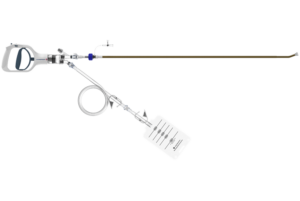 AngioDynamics, a leading medical technology company focused on restoring healthy blood flow in the body’s vascular system, has announced European CE mark approval of the AlphaVac F1885 system for the non-surgical removal of thrombi or emboli from the pulmonary arteries and for the treatment of pulmonary embolism (PE).
AngioDynamics, a leading medical technology company focused on restoring healthy blood flow in the body’s vascular system, has announced European CE mark approval of the AlphaVac F1885 system for the non-surgical removal of thrombi or emboli from the pulmonary arteries and for the treatment of pulmonary embolism (PE).
“The CE mark represents a major step forward in enhancing patient care and safety for endovascular therapies in the EU, a market with a higher prevalence of PE when compared to the USA,” said Laura Piccinini, AngioDynamics senior vice president/general manager, Endovascular Therapies and International. “This designation allows us to broaden our reach and provide innovative solutions to more healthcare professionals treating patients diagnosed with PE—on an increasingly global scale.”
An estimated 435,000 PE events occur each year in the six largest European Union (EU) countries. Compared to the USA, the prevalence of PE is higher for those patients admitted to the emergency department in Europe, and European patients also had higher acuity and worse outcomes.
The CE mark for the AlphaVac F1885 system expands treatment options for healthcare professionals in the EU by offering a tool that helps reduce thrombus burden and improve right ventricular function in patients with PE, the recent press release states.
In December 2023, AngioDynamics announced the completion of patient enrolment in its US-based Acute Pulmonary Embolism Extraction Trial with the AlphaVac System (APEX-AV) study, a single-arm Investigational Device Exemption (IDE) study that enrolled 122 patients with confirmed acute, intermediate-risk PE across 25 hospital-based sites to assess the AlphaVac F1885 System for the treatment of PE.
The APEX-AV trial showed a mean decrease in the RV/LV ratio from baseline to 48 hours post-procedure of 0.45 (significantly greater than the pre-defined performance goal of 0.12 (p<0.001) and a major adverse event (MAE) rate of 4.1% (significantly lower than the pre-defined performance goal of 25% (p<0.001). The study also showed a 35.5% mean reduction in clot burden from baseline to 48 hours post-procedure and a mean procedure time of 37.2 minutes.










